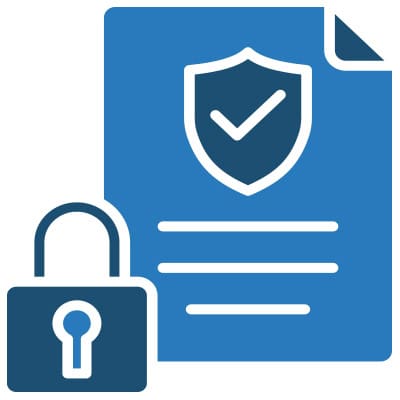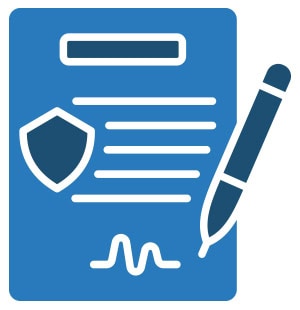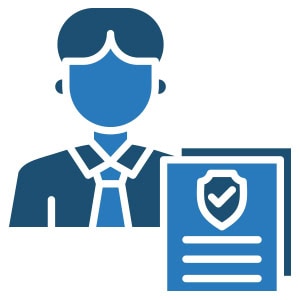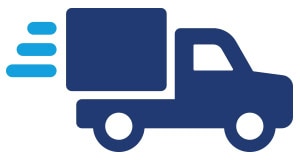What’s the First Thing You Would Do to Combat Cargo Theft?

Cargo theft is surging as thieves get more strategic and steal cargo from warehouses, parking lots, truck stops, roads, and yards. Readers share the impactful actions that could deter thieves and protect shipments.
Quick To-Do’s
☑ Use Air Cuff locks on trailers.
☑ Have on-site security at facilities that are in high-theft areas.
☑ Ensure drivers go no less than 250 miles prior to stopping.
☑ Ensure drivers do not stop to fuel or break in high-crime areas or certain cities
that are known to be high-theft areas.
☑ Have drivers fuel prior to taking the load out.
–Tammie Dean
Recruitment Manager
Lily Transportation
Vet and Verify
 Implement a detailed vetting process, then review and update it every 6 months at minimum. Use the service providers and resources that can help with your vetting process. Pay close attention to details: The difference between your shipment making it from point A to point B could be the difference between a lower-case L and an upper case I or a number added that wouldn’t normally be in the email address.
Implement a detailed vetting process, then review and update it every 6 months at minimum. Use the service providers and resources that can help with your vetting process. Pay close attention to details: The difference between your shipment making it from point A to point B could be the difference between a lower-case L and an upper case I or a number added that wouldn’t normally be in the email address.
–Jessica Renner, CCP
Cargo Claims and Risk Manager, Jarrett
Board of Directors, Transportation & Logistics Council
Carefully vet logistics service providers. The frequency of incidents involving thieves acting upon inside information is alarming. Providers throughout the global supply chain have access to cargo descriptions, values, locations, timing, and security measures, providing a road map of what to steal and when to steal it. Entrust cargo to valued business partners.
–Jason Odgers
Senior Vice President
World Insurance Services
Put a strict carrier vetting process in place that outlines the requirements for working with the carrier. This can include years in service, number of power units, safety ratings, and other minimum criteria necessary to start working with a carrier.
–Frank Matarazzo
CEO
Fusion Transport
Vet the carriers in your network. By ensuring your carriers comply with DOT and FMCSA regulations, you significantly reduce the risk of theft. Carriers that adhere to state and national regulations have established their credibility and work consistently to maintain their reputation.
–Mike Trudeau
Executive Vice President of Business Development
Montway Auto Transport
Theft prevention starts with a thorough carrier vetting process, which includes vetting for high value and targeted commodities. We regularly monitor carriers for authority and insurance and have additional protective measures in place for more vulnerable commodities.
–Molly Mangan
Sr. Vice President of Sales
Echo Global Logistics
Learn about modern theft methods, commonly targeted goods, and high-theft regions. Next, audit and continuously optimize your cargo theft prevention processes, technology, and insurance to mitigate risk and loss.
–Kenneth Hull
Vice President, Compliance
Arrive Logistics
Pull together people from within the industry, including the relevant government agencies, to help find a consensus.
–Steve Healy
CEO
COREX Logistics
Enhance physical security measures. Some products have higher street values than others, so those require higher security measures such as physical access controls at the yard as well as seals and sensor cameras on products that provide alerts for tampering.
–Ann Marie Jonkman
Vice President, Industry Strategy
Blue Yonder
 Put strong data-collecting and reporting processes in place. Compile and maintain a clean data set regarding stolen loads, attack vectors (direct physical theft vs. digital fraud vs. social engineering), financial impact, and customer impact to help your team deduce the issue’s root cause and mitigate it effectively.
Put strong data-collecting and reporting processes in place. Compile and maintain a clean data set regarding stolen loads, attack vectors (direct physical theft vs. digital fraud vs. social engineering), financial impact, and customer impact to help your team deduce the issue’s root cause and mitigate it effectively.
–Jack Gerstner
Senior Vice President, Coverage & Operations
Coyote Logistics
Combine automated carrier vetting technologies, frequent and thorough training/education of front-line brokers to detect fraud schemes, and strict security procedures to validate that the driver and truck arriving for pickup is whom the load was tendered to.
–Jordan Solomon
Director, Risk Management
Kenco
Move highly transferable commodities via rail making sure to load on the bottom of the train. Then there is no way to open the swing doors, preventing theft. When intermodal isn’t an option, careful carrier vetting and putting extra care into highly transferable loads has been our safest option.
–John Newton
Senior Vice President, Business Development
TA Services
Remove all branding from your master cases. Beyond that, it’s critical to provide your end customer with real-time shipping data, including alerts to notify them the moment the product reaches its destination so they can immediately retrieve their product.
–Brian Tu
Chief Revenue Officer
DCL Logistics
Implement a telematics solution to monitor and control refrigeration units, track consignments, and use features like alerts, alarms, geo-fencing, and geo-tracking for full cold chain control. Door sensors, a key feature, prevent cargo theft by providing real-time alerts.
–Alan Peart
Telematics Sales Manager, Global Container Refrigeration
Carrier Transicold
Utilize existing carrier relationships. Knowing who has your freight is crucial.
–Jeff Goins
Director, Carrier Sales
Circle Logistics
 Adopt a risk-based approach. Assess each transit by evaluating the cargo for illicit demand, the mode of transport, and location. Tailor security for risks like hijacking or concealed theft and design measures—routes, transit times, driver needs, GPS, remote engine locks, and hardened vehicles—while balancing risk and cost.
Adopt a risk-based approach. Assess each transit by evaluating the cargo for illicit demand, the mode of transport, and location. Tailor security for risks like hijacking or concealed theft and design measures—routes, transit times, driver needs, GPS, remote engine locks, and hardened vehicles—while balancing risk and cost.
–Peter Hunt
VP, Brand Protection, Security and Resiliency
Flex
Implement a two-step process. First, intentionally create a decoy. Load containers with tracking devices and fake shipments. This would potentially catch perpetrators. Second, use tracking devices with artificial intelligence-based analysis allowing for a proactive approach to theft.
–Stephen Dombroski
Director, Consumer Markets
QAD
Provide accurate asset tracking capabilities and increase end-to-end visibility across the supply chain.
–Miriam Molino Sánchez
Head of Industry Practice
Stibo Systems
Put discreet trackers on the product to see exactly when and where the theft is taking place. This will help you identify which provider is at fault and make changes. If you can’t afford to experience any more theft, then I would seek the help of a 24/7 command center service that is trained to action sensor-based alerts to escalate and call the police when necessary.
–Keiley Ostrow
Vice President of Business Development
Reelables
Invest in trailer door monitoring sensors or services. Knowing when a door has been opened unexpectedly provides data to pinpoint when and where threats occur.
–Bryant Smith
Director, Product Management
Manhattan Associates
Start with a stronger mechanism than typical container seals to combat containerized cargo theft. Bolt seals, for example, are inexpensive and commonly used. However, since these can still be defeated, it’s recommended to implement additional deterrents such as locking bars and cable seals.
–Andrew Rossell
VP Operations
ASF Global Logistics
 Map out who is responsible for each part in the supply chain, from manufacturing to the distribution center through to the final delivery of goods. There’s no substitute for a detailed understanding of your supply chain partners and the practices they have in place to counter theft.
Map out who is responsible for each part in the supply chain, from manufacturing to the distribution center through to the final delivery of goods. There’s no substitute for a detailed understanding of your supply chain partners and the practices they have in place to counter theft.
–Tony Pelli
Practice Director, Security and Resilience
BSI
Combating cargo theft requires a multi-faceted approach. After implementing GPS tracking and advanced monitoring systems, it is crucial to establish a platform for seamless information and alert exchanges between shippers and carriers. This real-time communication not only deters potential theft but also enables a swift response to security breaches.
–Vlad Kadurin
Chief Product and Operations Officer
Ship.Cars
Add layers of security. Implementing company-wide training to educate and ensure security protocols are tailored to operations and confirming cargo insurance covers emerging threats would be first lines of defense.
–Jason Totah
President Integrated Marine Logistics Division
Odyssey Logistics
The key to combating cargo theft is planning ahead. While theft is always unexpected, taking proactive and preventive security measures, as well as investing in technology that offers solutions like GPS real-time tracking through AI, block chain and IoT, is critical to catching theft before it strikes.
–Archita Prasad
VP
UPS Capital
Use cameras on the lots. No storing commodity overnight while in the yard. Driver IDs having to be presented to the shipper. Use freight tracking. Door sensor technology to show when trailer doors are opened and closed. In-trailer camera technology. Trailer tracking. Do not let any loads sit after being loaded. Do not leave any paperwork indicating what is on the trailer lying around.
–Gino Fontana
Chief Operating Officer – Executive Vice President
Transervice Logistics Inc.
Our preventive measures include container security with specialized door seals and locks with shipments monitored via GPS tracking and real-time updates through our command center. Also utilized are bottom-well placement for intermodal transport, railroad drone security and railroad private police force, blind shipping and document processing, and pattern disruptors to avoid predictability.
–Matt Miller
Senior VP of Intermodal Strategy
Cornerstone Systems
 Foster a unified approach among employees and drivers through awareness and training programs. When everyone is well-informed about the latest theft tactics and prevention strategies, and remains vigilant for suspicious activity, it becomes harder for theft to happen. Implement SOPs to enhance vigilance and counter the creativity of modern criminals.
Foster a unified approach among employees and drivers through awareness and training programs. When everyone is well-informed about the latest theft tactics and prevention strategies, and remains vigilant for suspicious activity, it becomes harder for theft to happen. Implement SOPs to enhance vigilance and counter the creativity of modern criminals.
–Normand Frigon
Chief Operating Officer
MODE Global
Cargo theft falls into two categories: cargo improperly picked up or dropped off and cargo stolen in transit. Additional biometric or two-factor authentication at origin and destination and more secure, inaccessible and encrypted telematics on trucks and trailers, coupled with more rapid response from law enforcement when in transit.
–Scott Case
Founder and Chief Storyteller
Position : Global
Combating cargo theft starts with implementing real-time tracking and visibility through GPS and telematics. Leveraging software with fraud detection features can significantly enhance proactive monitoring by identifying and addressing fraudulent carriers. This dual approach strengthens security and minimizes the risk of cargo loss, ensuring more reliable and efficient logistics operations.
–Andrew Wimer
Senior Director, Professional Services
Descartes Systems Group
Consult risk-management professionals for best practices insights, SOP support, and proper security procedure guidance – then hold your people accountable for following these procedures
–Jim Heide
COO & Co Founder
Loadsure
Actively monitor and flag issues as they occur. A proactive approach helps prevent problems before they escalate. Real-time data is crucial for immediate tracking and verification. Instead of relying on potentially tricky claims from drivers or customers, definitive tracking of the cargo itself would significantly enhance security and efficiency in the logistics industry.
–Dennis Moon
COO
Roadie
Integrate predictive analytics and real-time data sharing across the supply chain. Supply chain orchestration with transparency of shipments down to the order level and the ability to act on that information ensures a swift and coordinated response to potential threats, minimizing losses and maintaining supply chain integrity.
—Polly Mitchell-Guthrie
VP, Industry Outreach and Thought Leadership
Kinaxis
 Constantly move cargo as it is ripe for picking when idle. Sometimes, even proper planning is insufficient to ensure cargo does not sit idle at port or transshipment. Shippers need visibility into en-route risks and delays to react quickly to keep freight away from prying hands.
Constantly move cargo as it is ripe for picking when idle. Sometimes, even proper planning is insufficient to ensure cargo does not sit idle at port or transshipment. Shippers need visibility into en-route risks and delays to react quickly to keep freight away from prying hands.
–Doug DeLuca
Product Marketing Manager
SAP Business Network
Cargo theft is an arms race between thieves and shippers. Embedded trackers in pallets and high value packages assists in recovery, but not prevention. Equipment that makes shipments hard targets is essential; thieves will move on to the next vehicle. Staying ahead of the criminals is an evolving challenge.
–Joe Adamski
Senior Director
ProcureAbility
GPS/Airtags for all trailers provides the transparency needed to trace and track all product – allowing the window for theft to be open as little as possible.
–Jackie Lauer
Warehouse Manager
TA Services
Sounds simple, but make sure that all doors are closed and locked with a yellow security seal. You cut down risk while in motion, so make sure drivers are making the least amount of stops as possible. Tracking trailers and tractors keeps everyone on the same page.
–Dawn Pierce
Warehouse HR Manager
TA Services
Educate personnel about protocol. If you identify vulnerabilities by analyzing where and how thefts are likely to occur, then implement physical security measures, procedural safeguards, and technological solutions – you are going to mitigate risks. Establishing a system to monitor shipments and respond quickly is the best way to avoid suspicious activity.
–Tony Oakes
Training Manager
TA Services
Start with a robust warehouse management system. Include a detailed process focusing on inventory with track and trace functionality to detect issues before the theft goes downstream. Various audits and checks along with ironclad process adherence will uncover the root cause of the problem, allowing solutions to follow.
–Mitchell Houston
Operations Excellence Manager
TA Services
Use predictive procurement tools to quickly identify alternative sources. Using strong supplier relationships with procurement technology ensures supply chains can adapt to disruptions, protecting business continuity and minimizing the impact of theft.
–Edmund Zagorin
Founder & Chief Strategy Officer
Arkestro
